Research fellowships offered by Alaska Geographic and Denali Education Center through the Murie Science and Learning Center help scientists conduct field research in Arctic and subarctic Alaskan national parks.
Seven researchers received fellowships in 2015 to conduct studies in four arctic and subarctic national parks in Alaska. Many of these fellows are graduate students.
Arctic Pollinator Inventory
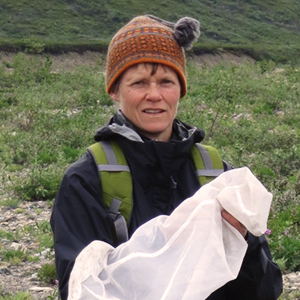
Jessica Rykken, Museum of Comparative Zoology at Harvard
Gates of the Arctic National Park and Preserve
Jessica Rykken has been conducting pollinator and other insect surveys in national parks for the past ten years, including Boston Harbor Islands, Denali, North Cascades, and Olympic. This summer she will be working in Gates of the Arctic, conducting a preliminary inventory of bees and flower flies (family Syrphidae), two important and diverse pollinator groups in sub-arctic and arctic ecosystems. Jessica will use a net and small pan traps known as “bee bowls” to collect pollinators in a diversity of habitat types with flowering plants such as gravel bars, lake margins, and alpine tundra. The inventory will build on an existing database for pollinators in Alaska national parks, begun in Denali NPP in 2012, which documented 20 species of native bees, and 42 species of syrphid flies, including one species new to science. An equally important goal of the project will be to educate park staff and visitors about native pollinator diversity, natural history, and pollination ecology through a variety of activities and media.
Geochemical Characterization of Rhyolite Sources and Artifacts
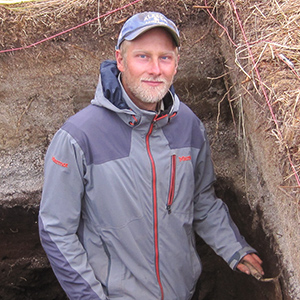
Alaska Geographic 2015 Research Fellowship
Sam Coffman, Research Archaeologist/GIS Coordinator at the University of Alaska Museum of the North
Denali National Park and Preserve and Wrangell St. Elias National Park and Preserve
Understanding the implications for prehistoric human mobility is a major goal of archaeological investigation. Alaska, considered the “gate-way to the Americas” has a long and continuous occupation offering archaeologists a prime opportunity to address changes in tool-stone procurement, tool manufacture, and mobility strategies among prehistoric foraging groups. One way to address these questions is to use data from lithic source provenance analyses. Such analyses are an important tool for examining prehistoric behaviors associated with raw material procurement, mobility, and for reconstructing landuse strategies. In Alaska, such studies are in their infancy. This study will focus on rhyolite (a fine-grained igneous rock geochemically similar to obsidian) with the continued intent of identifying and delineating geochemical groups, while proposing a provisional framework for describing the identified groups, and attempting to “pinpoint” the geological source of the material.
This project will have both field and laboratory components and will seek to identify the physical geological sources of rhyolite as well as geochemically characterize existing collections from Denali National Park and Preserve and Wrangell St. Elias National Park and Preserve.
Snowshoe Hare and White Spruce Interactions in a Rapidly Changing Landscape
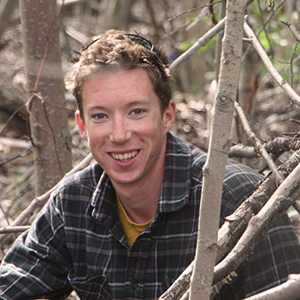
Alaska Geographic 2015 Research Fellowship
Justin Olnes, University of Alaska Fairbanks
Denali National Park and Preserve
Justin studies the impact of snowshoe hare herbivory on white spruce establishment in interior Alaska as a way of understanding how plant-herbivore interactions respond to environmental change. White spruce is the dominant tree species in Denali National Park and snowshoe hares are the dominant herbivore in interior Alaska during peaks in their population cycle. Snowshoe hares fluctuate in abundance on a roughly decadal cycle, which means that the browsing pressure they exert on vegetation changes over time. White spruce reproduces mainly via masting events, where individuals in a population synchronize their seed production during favorable climatic periods. If white spruce masts during a peak in the snowshoe hare population cycle, than many of the subsequent seedlings may be consumed by hares. If a masting event occurs during a low in the hare cycle, however, the seedlings may escape herbivory. Data that I’ve collected along the Tanana River near Fairbanks lends support to this hypothesis. Alaska is a rapidly changing landscape, and how both white spruce and snowshoe hares are able to respond to such changes will have important consequences for the ecology of Denali National Park.
Measuring the Biotic Integrity of Streams with Restoration
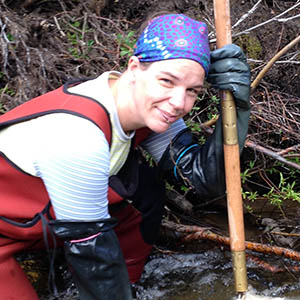
Alaska Geographic 2015 Research Fellowship
Robin Henderson, Washington State University (Ph.D. student)
Denali National Park and Preserve
In 2014, the National Park Services began to restore a section of Eldorado Creek, located in the Kantishna Hills of Denali National Park and Preserve (DENA). The effectiveness of the project has been monitored with a biotic index known as the Observed/Expected (O/E) ratio, which is developed from a predictive model using macroinvertebrate assemblage data.
Central to bioassessment is the reference condition approach (RCA), defined as the condition representative of a group of minimally disturbed sites organized by selected physical, chemical, and biological characteristics. With predictive models like those used in Robin Henderson’s research, the RCA is applied by determining the biotic integrity for a collection of reference sites that characterizes the potential biological conditions in the region where assessments are made. The reference sites and their associated predictor variables create the basis for the predictive models whereby each non-reference (i.e., restoration) site is assigned probability weightings of belonging to all reference groups based on the values of predictor variables, reducing the natural variation of biological data so that predictions are more precise. Moreover, if restoration sites belong to a reference group that is not represented or under-represented, the predictions of the model will be inaccurate and imprecise.
Subsequently, it is critical that the El Dorado Creek restoration sites be matched with appropriate reference conditions. Therefore, Robin’s research will increase the accuracy and precision of the existing biotic index by sampling additional reference sites with similar physical, chemical, and biological characteristics to the restoration sites (in a pre-disturbed condition).
The Social and Historic roles of Sled Dogs in Interior Alaskan Culture
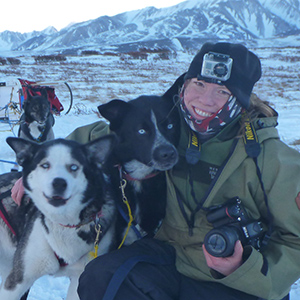
Discover Denali Research Fellowship
Jayme Dittmar
Denali National Park and Preserve, Gates of the Arctic National Park, and Yukon-Charley Rivers National Preserves
Jayme will research the role that sled dogs play in the educational, historic, social and spiritual components of Interior Alaskan culture. She will explore if and how the sled dog belongs in a modern world facing socioeconomic and climate change realities. Jayme will travel to various communities whose residents have strong ties to lands protected by the National Park Service including areas surrounding Denali, Gates of the Arctic and Yukon-Charley to perform interviews and gather video footage. She will unearth the stories and memories of mushing in the past and film accounts of how sled dogs are used in work, life, and sport today. This research will be used to produce a series of film/audio shorts that will have potential to be displayed at National Park Service visitor centers, museums and native cultural preservation efforts. The complete, unedited interviews will be transcribed and preserved in Denali National Park and Preserve’s museum archives.
Investigation of Spatial Distribution of Mercury in Tundra Soils of Alaska
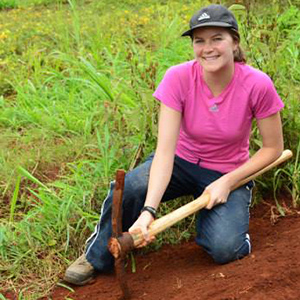
Alaska Geographic 2015 Research Fellowship
Christine Hedge, University of Nevada (Ph.D Student)
Chistine Hedge's research project seeks to understand the cycling of mercury (Hg) in and near parks in the arctic tundra in northern Alaska. Hg is a neurotoxic environmental pollutant of worldwide concern and has increased three to five fold since pre-industrial periods due to anthropogenic activities. Hg pollution is expected to continue and increase in the Arctic, particularly in the western arctic-boreal zone of Alaska due to increased emissions and long-range transport from Asia. Dramatic observed changes occurring in arctic environments caused by climate change will have large effects on the biogeochemical and mercury cycling in these tundra ecosystems. This could potentially lead to the release of large quantities of Hg stored in soils to streams and lakes, posing the greatest harm to wildlife and humans. In this study, she aims to investigate the amount of Hg stored in tundra soils and vegetation along a northern spatial transects within parks near the Arctic Circle in Alaska. This information may help park managers and scientists to develop strategies to mitigate the negative consequence of this pollutant and the potential consequences of climate change.
Examining the effect of nighttime traffic on wildlife visibility

Alaska Geographic 2015 Research Fellowship
Peter Boyd, Purdue University
In 2012, Denali National Park completed a Vehicle Management Plan (VMP). The plan was produced to control the amount of traffic on the Denali Park Road during nighttime hours (10pm-6am). Denali established the plan in order to avoid negatively impacting wildlife in the park and deterring animals away from the road. Peter came to Denali to study the connection between nighttime traffic and wildlife visibility. The Vehicle Management Plan states that there should be an average of fewer than three vehicles per hour recorded at each of the six traffic counters along the road. Also, there should be no more than six vehicles in any given nighttime hour. Peter will use data analysis to see if the conditions of the plan are effective and if animals respond adversely to nighttime traffic.
Based on the results of the study, Peter’s findings may be incorporated into the decision making that determines how the VMP is implemented. Peter’s effort continues the commitment of Denali NP&P and the VMP to protect wildlife and maintain high visitor satisfaction.
Last updated: May 14, 2015
